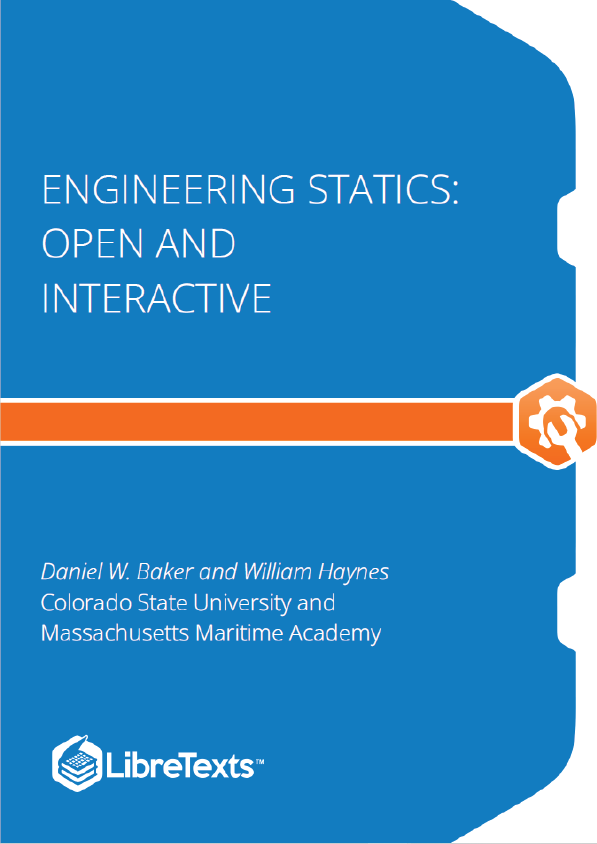1: Introduction to Statics
Engineering Statics is the gateway into engineering mechanics, which is the application of Newtonian physics to design and analyze objects, systems, and structures with respect to motion, deformation, and failure. In addition to learning the subject itself, you will also develop skills in the art and practice of problem solving and mathematical modeling, skills that will benefit you throughout your engineering career.
The subject is called “statics” because it is concerned with particles and rigid bodies that are in equilibrium, and these will usually be stationary, i.e. static.
The chapters in this book are:
Introduction to Statics— an overview of statics and an introduction to units and problem solving.
Forces and Other Vectors— basic principles and mathematical operations on force and position vectors.
Equilibrium of Particles— an introduction to equilibrium and problem solving.
Moments and Static Equivalence— the rotational tendency of forces, and simplification of force systems.
Rigid Body Equilibrium— balance of forces and moments for single rigid bodies.
Equilibrium of Structures— balance of forces and moments on interconnected systems of rigid bodies.
Centroids and Centers of Gravity— an important geometric property of shapes and rigid bodies.
Internal Loadings— forces and moments within beams and other rigid bodies.
Friction— equilibrium of bodies subject to friction.
Moments of Inertia— an important property of geometric shapes used in many applications.
Your statics course may not cover all of these topics, or may move through them in a different order. Below are two examples of the types of problems you’ll learn to solve in statics. Notice that each can be described with a picture and problem statement, a free-body diagram, and equations of equilibrium.
Equilibrium of a particle: A person walks across a slackline stretched between two trees. If angles and are known, find the tension is in each end of the slackline.











